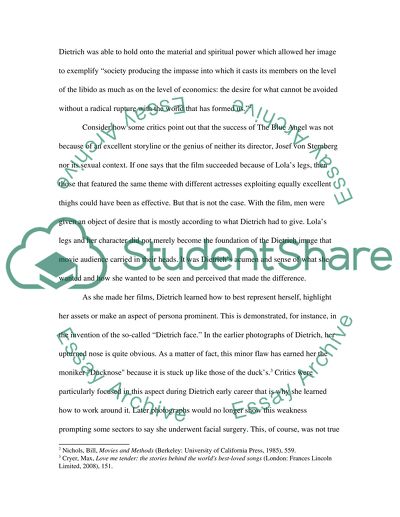Cite this document
(“Marlene Dietrich Essay Example | Topics and Well Written Essays - 2500 words”, n.d.)
Retrieved de https://studentshare.org/visual-arts-film-studies/1391623-the-star-image-of-marlene-dietrich
Retrieved de https://studentshare.org/visual-arts-film-studies/1391623-the-star-image-of-marlene-dietrich
(Marlene Dietrich Essay Example | Topics and Well Written Essays - 2500 Words)
https://studentshare.org/visual-arts-film-studies/1391623-the-star-image-of-marlene-dietrich.
https://studentshare.org/visual-arts-film-studies/1391623-the-star-image-of-marlene-dietrich.
“Marlene Dietrich Essay Example | Topics and Well Written Essays - 2500 Words”, n.d. https://studentshare.org/visual-arts-film-studies/1391623-the-star-image-of-marlene-dietrich.


